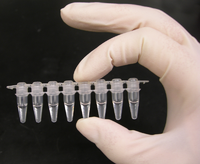
Photo from wikipedia
Introduction. Environmental surveillance for Clostridioides difficile is challenging. There are no internationally agreed recommendations on which method should be used when environmental surveillance is undertaken.Aim. To compare the detection of… Click to show full abstract
Introduction. Environmental surveillance for Clostridioides difficile is challenging. There are no internationally agreed recommendations on which method should be used when environmental surveillance is undertaken.Aim. To compare the detection of C. difficile by RT-PCR to culture-based methods and to determine which is more sensitive and specific in the clinical environment.Methods. Forty-four near-patient areas of C. difficile-positive patients were sampled using contact plates and moistened flocked swabs.Results. Detection using moistened flocked swabs followed by RT-PCR or culture detected more C. difficile than contact plates. The sensitivity and specificity of a RT-PCR assay for tcdB compared to the culture methods was 76 and 91 %, respectively.Conclusion. Despite the lower sensitivity and specificity, RT-PCR could potentially offer a more rapid and practical alternative.
Journal Title: Journal of medical microbiology
Year Published: 2023
Link to full text (if available)
Share on Social Media: Sign Up to like & get
recommendations!